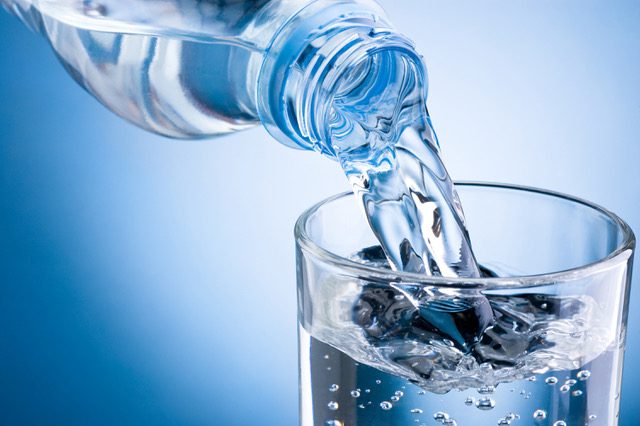For me, this is personal. Last Friday I exercised from 4:30 to 5:30 pm and quickly dressed to meet a friend for dinner at 6pm. We began our dinner with a glass of red wine and I ordered a bowl of chili inspired by the fall-like temperature. We enjoyed our meal, paid the bill, and as we got up to leave, I began to feel light-headed. I sat right down and proceeded to experience intense nausea with the resulting consequences (I’ll spare you the gory details).
The culprit turned out to be dehydration caused by inadequate fluid intake. Water is the human body’s major component. Therefore, water is an essential nutrient for healthy hydration without bringing any other elements into the body. On average, the adult body contains 60% water, mostly contained inside our cells. In fact, our billions of cells must have water to live. The total amount of water in our body (two-thirds) is found within our cells.
More muscle equates to more water content. Conversely, the fatter the body, the less water the body contains, as body fat has little water. Our vital organs contain different amounts of water: the brain, the lungs, the heart, the liver and the kidneys contain a large quantity of water – between 65 to 85% depending on the organ, while bones contain less water (but still 31%!).
Muscles atrophy with age, and older adults consequently have less water in their bodies than younger people. From infancy to our elderly years, the composition of the body changes from 75% to 50% water on average. The kidneys’ ability to reabsorb water decreases with age, so water is lost from the body in greater amounts. In addition, the sensation of thirst diminishes as we grow older, so it’s even more important to monitor water intake carefully to avoid dehydration.
The main conditions leading to a fluid deficit are high ambient temperature, high humidity, restricted fluid availability, and protective clothing that traps heat and perspiration. The consequences include decreased blood volume, increased heart rate, and lowered exercise capacity. So how much fluid does the average, healthy adult living in a temperate climate need? The Institute of Medicine determined that an adequate intake for men is roughly about 13 cups (3 liters) of total beverages a day; the average intake for women is about 9 cups(2.2 liters) of total beverages a day. The rule could be reframed as: “Drink eight 8-ounce glasses of fluid a day,” because all fluids count toward the daily total.
What you eat also provides a significant portion of your fluid needs. On average, food provides about 20 percent of total water intake. For example, many fruits and vegetables, such as watermelon and spinach, are 90 percent or more water by weight. In addition, beverages such as milk and juice are composed mostly of water. Even beer, wine and caffeinated beverages — such as coffee, tea or soda — can contribute, but these should not be a major portion of your daily total fluid intake. Water is still your best bet because it’s calorie-free, inexpensive and readily available.
To ward off dehydration and make sure your body has the fluids it needs, make water your beverage of choice. It’s also a good idea to:
•Drink a glass of water or other calorie-free or low-calorie beverage with each meal and between each meal.
•Drink water before, during and after exercise. Electrolyte-enhanced waters have things like potassium and sodium added to them, which help your body absorb the water more quickly. These electrolytes are helpful in preventing dehydration, so they’re especially useful during and after intense workouts. •Drink plenty of water while drinking alcohol. The common belief that consumption of alcoholic beverages, such as wine, results in dehydration is fully supported by scientific research.
•Monitor the color of your urine. When you are properly hydrated your body discharges clear urine with a tinge of yellow. However, concentrated, dark urine (chardonnay or orange) is a telling sign of dehydration.
Cheers!
Water is Life
November 20, 2016

